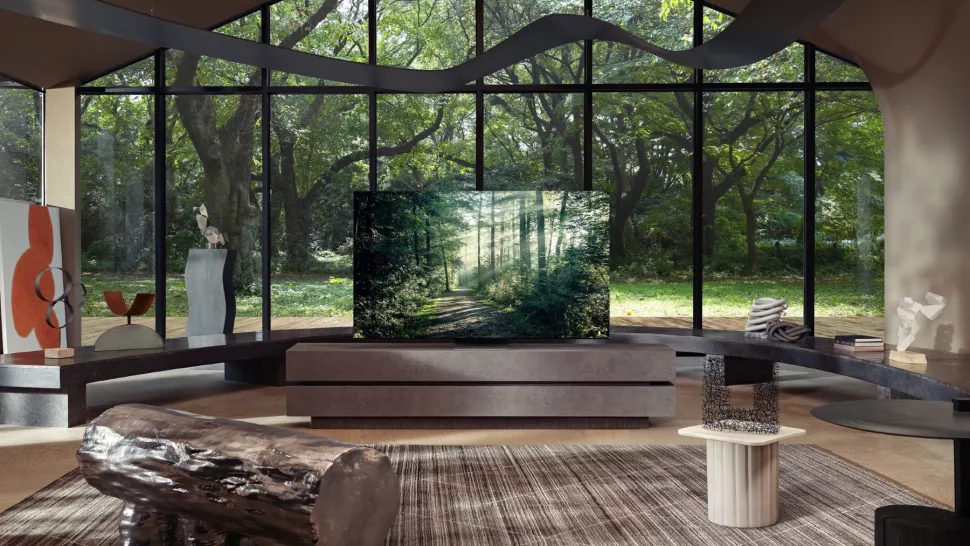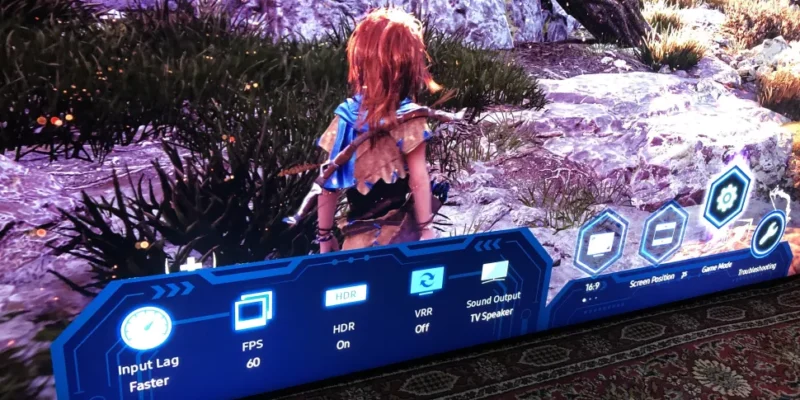5 simple tips to further develop your Samsung TV’s image quality
Samsung has been the world’s greatest selling TV brand for quite some time. And that implies, obviously, that you’ll find the best Samsung TVs sitting in additional lounges across the globe than those of some other brand.
Samsung has gained notoriety for conveying regularly great execution principles to match the best TVs across its entire reach, regardless of whether you’ve sprinkled out on a tip top model, or have snatched a low-evaluated deal. For sure, this is reasonable a major consider its persevering through progress.
Nonetheless, the experience you get with any Samsung TV really relies on how you set them up. This raises the possibility of possibly a large number of individuals all over the planet accidentally managing with a TV picture execution that is not great, on the grounds that the out-of-the-case settings are seldom the most ideal choice.
So here, put together both with respect to our own encounters and correspondence from Samsung TV proprietors throughout the long term, are the 5 vital hints to immediately further developing how your TV looks.
1. Change from the Dynamic picture preset
While Samsung fortunately no longer conveys its TVs set to their Dynamic picture preset naturally, the choice is as yet accessible. As a matter of fact, it shows up at the highest point of what stays an exceptionally restricted rundown of picture preset choices.
From the get go experiencing passionate feelings for the Dynamic mode is simple. All things considered, it’s intended to ‘flaunt’ the limits your TV is fit for with regards to variety range, splendor, difference and sharpness. In that capacity, it baits clueless buyers in like moths to a fire.
Tragically, however, when you move beyond the underlying razzle astonish, the Dynamic mode really doesn’t help picture quality by any means. Rich tones, for example, can turn out to be so outrageous they look recognizably unnatural. Some variety tones will generally get pushed more than others as well, prompting a deficiency of equilibrium, and unpretentious concealing subtleties can vanish, making pictures feel compliment and more childish.
The contrast between the most obscure and lightest pieces of the image can be extended to where again things begin to look constrained and conflicting, and sharpness can be pushed such a lot of that profoundly finished pieces of the image can look bitty, unreasonably grainy, or plagued by gleaming commotion.
To put it plainly, what you truly need from a TV picture, to make the survey experience more vivid, is consistency and equilibrium. Which is practically something contrary to what the Dynamic picture presets is intended to convey.
So tip one is to stay away from the Dynamic preset… yet what would it be a good idea for you to do all things being equal? Ok, indeed, we have a tip for that, as well.
2. Change picture presets for various sources
Indeed, even whenever you’ve avoided the Dynamic disaster, research shows that the vast majority just stick with only one of their TV’s other preset choices. Don’t!
The Standard mode Samsung TVs default to now is pleasant for certain sorts of content. Its somewhat forceful methodology ordinarily plays pleasantly, for example, with standard transmission TV sources and game. Nonetheless, with film sources, particularly HDR film sources playing at 24 approaches per second, you can get fundamentally more adjusted, reliable and in this way vivid pictures assuming you utilize the Movie or Filmmaker Mode presets accessible on Samsung’s new TVs.
Both of these modes are intended to replicate satisfied with more ‘precision’. Or, in other words, utilizing picture settings that track nearer to the variety, brilliance and sharpness levels creatives will quite often utilize while dominating their substance.
The Filmmaker mode has really been laid out related to outsider industry body the UHD Alliance, however by and by we’d say that Samsung’s Movie mode conveys a somewhat more charming all over outcome with films.


3. Use movement handling… yet cautiously
Movement handling on TVs is intended to decrease the judder or goal diminishing haze – or both – that can seem when TVs need to show objects moving around the screen. It generally works by investigating each casing of an approaching picture source and sorting out some way to add extra ‘made up’ picture outlines between the genuine ones – an interaction known as edge insertion.
Numerous superior TVs offer a menu of movement handling draws near, however, that incorporate elective choices, for example, straightforward edge rehashing procedures, which diminish the weight on a TV’s video processors, and frameworks that add dark casings to the video transfer to attempt to reproduce the experience of judder you get with 24fps films at the film.
Most TV engineers appear to cherish movement handling, with basically every TV delivering with movement handling dynamic – ordinarily on a genuinely elevated degree of force – out of the container. Producers, then again, practically all disdain movement handling enthusiastically. A few exceptionally large Hollywood names have even put out recordings advising everybody to turn movement handling off.
Movement handling unquestionably can be pointless. If an excessive amount of judder is eliminated, for example, it can make films seem to be modest dramas. A lot handling can likewise make pictures look phony, while low quality movement handling can cause revolting undesirable incidental effects, (for example, glinting or smudgy haloes around moving items).
In any case, at the gamble of disturbing the Hollywood glitterati, we wouldn’t agree that that movement handling is dependably something terrible. Standard TVs are not in a similar ballpark in center board execution terms as your normal expert dominating screen, and nor accomplish they work similarly as film projectors. So at times, at any rate, a little great movement handling can really improve pictures by restraining any judder or obscure weaknesses a shopper TV board might endure with.
With Samsung TVs, we’d regularly propose setting their movement settings (tracked down in a Picture Clarity menu on late models) to a Custom setting, and picking levels three or four for the different haze and judder components. Given the distinctions there can be between center boards and handling power at various pieces of Samsung’s reach, nonetheless, we’d suggest exploring different avenues regarding movement settings on your specific set to get the best, normal looking equilibrium. Yet, begin there.
4. Keep away from sound decrease
Pretty much every Samsung TV conveys commotion decrease handling, and pretty much every TV has this set to on in its out of the case state. Computerized ‘commotion’ signifies little flaws in the picture that killjoy in because of how pressure functions – in principle, sound decrease searching for any bitty little regions and smooths it out.
While sound decrease handling sounds predominantly sure on paper, however, in actuality it can harm as opposed to improve picture quality. Either by making pictures look ‘delicate’ (as it attempts to obscure inordinate grain, impeding or spotting out of a picture), or by cleaning pictures of fine detail. Assuming sound decrease gets too energized while you’re watching films that have regular film gain, it can wind up streamlining other surface in your desired picture to keep. Unfortunate commotion handling might actually cause spreading over especially chaotic pictures.
The commotion decrease handling on Samsung TVs is entirely very great by the norms of the TV world at large, especially in premium models with AI handling. Regardless, we’d suggest that you switch both normal thus canceled MPEG NR with everything except the most chaotic looking sources to partake in a more straightforward looking and regular picture. Particularly with any somewhat fair 4K sources, which truly needn’t bother with any impedance from sound decrease whatsoever.
5. Turn Energy Saving modes off for more steady survey
Despite progressively tough power utilization guidelines, Samsung TVs transport with supposed Eco highlights in play. While these sound like a smart thought on paper, they can truly hurt picture quality.
The primary wrongdoers on Samsung TVs are the Ambient Light Detection and Motion Lighting choices. The Ambient Light Detection framework changes the brilliance of the image because of how much light in your room. This framework regularly leaves pictures looking more blunt than they ought to look, even in very splendid settings. Furthermore, in exceptionally dim rooms even HDR pictures can be left looking dull and level. Also in no way like they were intended to look by their makers.
The Motion Lighting (or LED Clear Motion) framework, in the mean time, tries to save power by lessening brilliance when there’s movement in the photos you’re watching. Similarly as with the Ambient Light Detection choice, however, this again regularly leaves pictures looking more obscure than they ought to, undercutting you in wording both of what your TV is able to do, and how consistent with source pictures look.
















